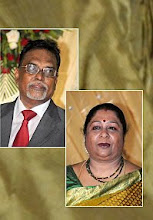LET'S PIN DOWN dyslexia
Study On 5,000 School Kid To Find Prevalence Of Specific Learning Difficulty
M Ramya | TNN
Seven-year-old Koushik Rajaraman loves to dance. But when asked to write his favourite pastime, he writes ‘bancing.’ Koushik’s parents laughed it off till he reached Class 4 and teachers started complaining. “He was having a specific learning difficulty (SLD), which made him confuse ‘d’ with ‘b’,” says pediatric neuropsychologist Dr B S Virudagirinathan. “Since it was diagnosed early, the condition could be corrected through some exercises and counselling.”There have been only estimates on the percentage of children with SLD – from 13% to 15% -- popularly known as dyslexia in the country. Now, a study on 5,000 schoolchildren aged six to 12 in Tamil Nadu seeks to find a more accurate prevalence of SLD. The state government is facilitating the study by Help Child Charitable Trust in matriculation schools across the state to detect dyslexia and hyperactivity disorders among children.
By 2014, Tamil Nadu will get an idea of what percentage of schoolchildren struggle with reading, writing and mathematics because of learning disorders. The study will include 2,500 children from rural areas and an equal number from urban centres from different parts of the state. The sample size has been decided in consultation with statisticians from CMC, Vellore, and Madras Medical College. The students will be assessed using a 90-minute standardised test called the Help Child Learning Disability Assessment Scale. The test will assess students for reading, writing, spelling and mathematical disorders. The test will include questions in English, Tamil and mathematics.
Mirror imaging of some alphabets like ‘d,’ ‘b’ and ‘g’ is common in such children who may also tend to write numerals like ‘9’, ‘7’ and ‘3’ inverted “It’s a neurobiological disorder resulting from a wrong wiring in the brain. An MRI scan cannot show this. Early identification by looking at their reading and writing is vital for early rectification,” says Dr Virudhagirinathan. “It is easier done before the age of 12, when the plasticity of the brain is good.” Children between Classes 2 and 6 have been chosen for the study because it is known that though children in urban schools start writing the English alphabets from kindergarten, those in rural areas start writing the alphabets only from Class 1.
Through the study, Dr Virudhagirinathan hopes to demolish myths surrounding SLD. “Many people believe that dyslexia is more prevalent among boys, but I think it is because in our culture people are more hesitant to bring a girl child to be tested for SLD because of how it could impact her future,” he said. This could prevent a girl child from getting intervention at the right time. At the end of it we will know not just the prevalence, but also the level of awareness of child caretakers, he said.
Experts say children with SLD are just as smart as everyone else. They just need to be taught in ways that are tailored to their unique learning styles. Schools, too, have a big part to play in identifying SLD in a child and helping him or her get over it. Shree Niketan Matriculation School correspondent P Vishnucharan said, “If you are a good school, it is your responsibility to help parents identify SLD in children and help them get remedial action. You can’t just send a child out of the school saying he or she can’t cope with the syllabus.”
(Times of India, 16:01:2013)
Labels: HEALTH



0 Comments:
Post a Comment
<< Home